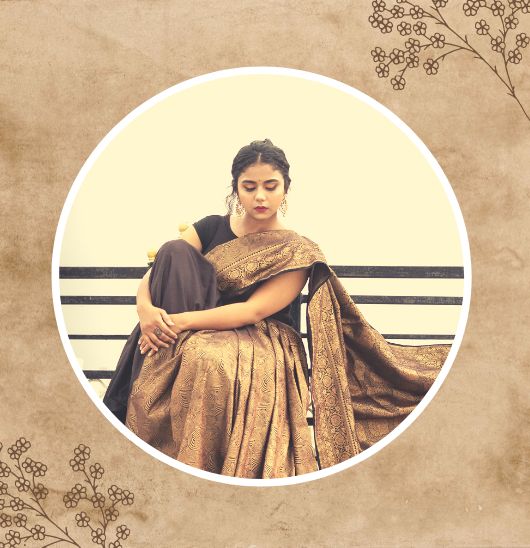
The History and Evolution of Sarees: From Ancient India to Modern Times
Over the centuries, the saree has evolved from a simple piece of clothing to a garment that embodies the culture, traditions, and values of the people who wear it, reflecting the changing cultural and social norms of Indian society.
Origin
In ancient India, the saree was known as the sari or chadar. The ancient saree was a simple piece of cloth that was draped around the body in various styles depending on the region and cultural traditions. In the north, women typically wore the saree with a tight-fitting bodice and a loose skirt, while in the south, the saree was draped over the head and draped over the shoulders.
The earliest known reference to the saree can be found in Rigveda, one of the oldest sacred texts of Hinduism, which dates back to 1500 BC. In this text, the saree is described as a garment draped over the body and held in place by a belt. It is believed that the saree originated in the Indus Valley Civilization, where it was worn by both men and women.
During the Maurya and Gupta periods, which lasted from the 3rd century BC to the 6th century AD, the saree began to take on a more refined appearance. In the Mughal era (16th to 19th century), the saree became more elaborate and opulent. It was during this time that the saree was first embellished with embroidery, gold and silver thread, and other decorative elements. The saree was also worn in a different style, with pleats at the front instead of the back, and new styles of saree, such as the chiffon and the sharara. The Mughals, who were great patrons of the arts, also introduced new techniques of embroidery and embellishment, such as zardozi and kamdani, which were used to create intricate and beautiful designs on the saree. The saree was worn by both royalty and commoners and was an important part of a woman's wardrobe.
During the British Raj, the saree underwent yet another transformation. The British introduced new fabrics, such as cotton and silk, which were more suitable for the hot and humid climate of India. Also, the saree became more structured and formal, with the introduction of the saree blouse. The blouse, which was initially worn underneath the saree, gradually became an integral part of the garment. The saree was also worn in a different style, with pleats at the back instead of the front. This style, known as the “Nivi” drape, is still popular today.
Symbolism Of Saree
The evolution of the saree has been a reflection of the changing times and cultural influences. From a simple piece of clothing to a garment that embodies the traditions and values of the people who wear it, the saree has come a long way. It continues to evolve, adapting to the changing needs and tastes of the people who wear it, while still retaining its timeless appeal.
The saree has also evolved in terms of the way it is worn. In the past, the saree was worn in a specific way depending on the region and cultural traditions. Today, there are multiple ways of wearing a saree, and women can choose the style that suits them best.
One of the most significant changes in the evolution of the saree has been the introduction of new fabrics and materials. In the past, the saree was typically made of cotton or silk, but today it is made of a wide range of fabrics including chiffon, georgette, and net. This has allowed designers to create sarees in a variety of colors, patterns, and styles.
Another key aspect of the evolution of the saree has been the rise of online shopping. The internet has made it easier for people to buy sarees from the comfort of their homes, and this has opened up a whole new world of possibilities for saree lovers. Today, there are numerous online stores that offer a wide range of sarees in different styles, colors, and fabrics.
In the modern era, the saree has continued to evolve and adapt to changing fashion trends. The saree is no longer just a traditional garment but has become a fashion statement. Designers have experimented with different fabrics, colors, and styles to create modern and fashionable sarees. The saree has also become popular among non-Indian women, who have embraced it as a versatile and stylish garment.
From its humble beginnings as a simple piece of cloth, the saree has evolved into a versatile and fashionable garment that has transcended cultural and societal boundaries. The saree continues to evolve, and it remains an important part of the fashion landscape in India and around the world.


